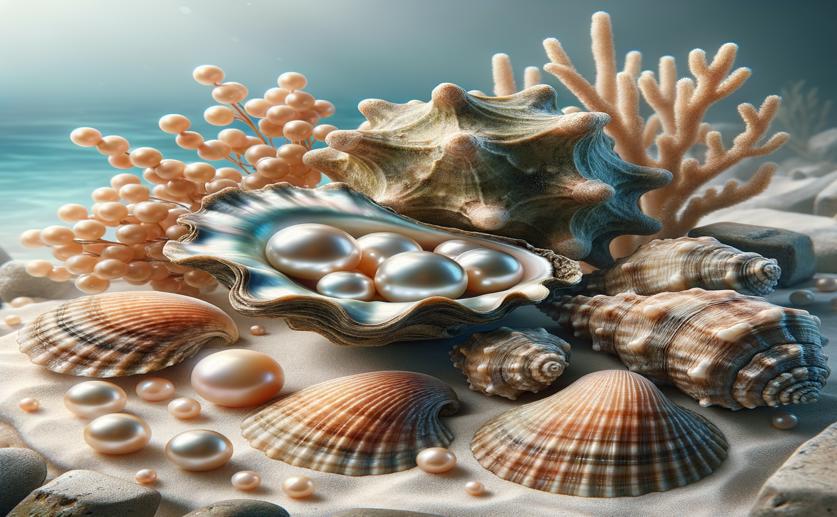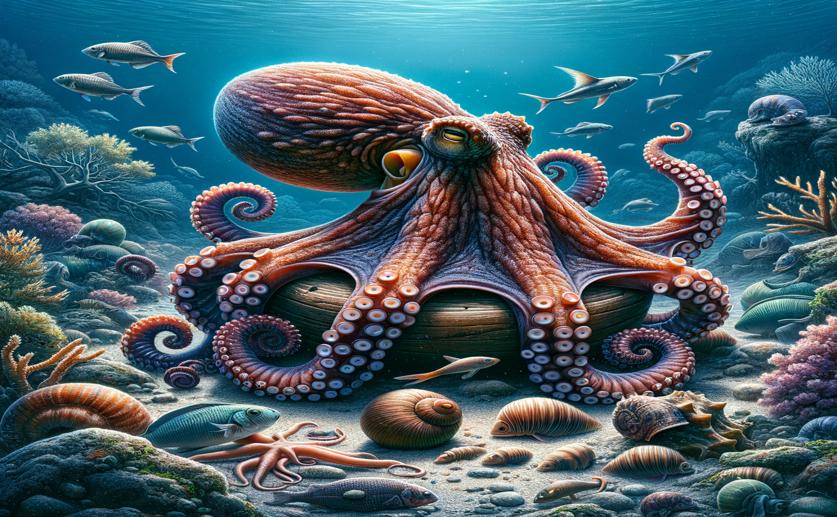
Marine Biology News
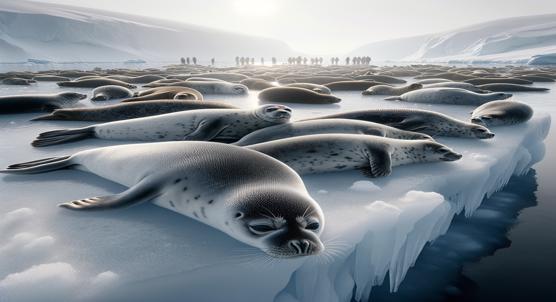
 14th July, 2024
| Greg Howard
14th July, 2024
| Greg Howard
Factors Influencing Resting Behavior of Non-Breeding Seals in Antarctica
A University of Canterbury study reveals how weather factors like air temperature and wind speed affect Weddell seals' haulout behavior, improving satellite-based population estimates and aiding in the management of marine resources amid climate change impacts.
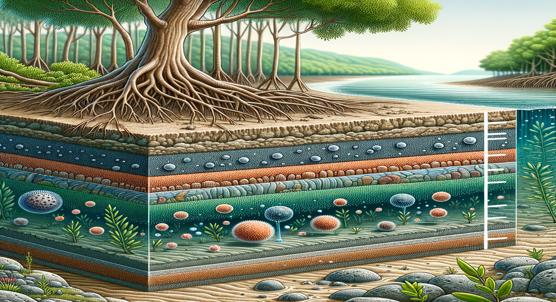
 14th July, 2024
| Jenn Hoskins
14th July, 2024
| Jenn Hoskins
Distribution and Community Formation of Microbes in Mangrove Sediments
Researchers at Shenzhen University have unveiled new insights into Myxococcota, micro-predators that play crucial roles in microbial ecosystems. Their study highlights Myxococcota's diverse habitats, predatory behaviors, and potential for novel antibiotic discovery.
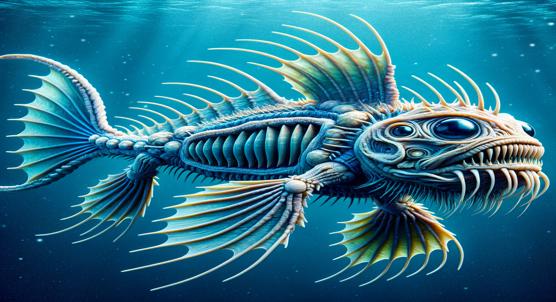
 14th July, 2024
| Jim Crocker
14th July, 2024
| Jim Crocker
New Deep-Sea Species and Its Complete Genetic Blueprint and Evolutionary Study
The discovery of a new sea cucumber species in the deep Pacific by the First Institute of Oceanography offers fresh insights into deep-sea biodiversity. Genomic analysis reveals unique adaptations to extreme conditions, challenging our understanding of these remote ecosystems.
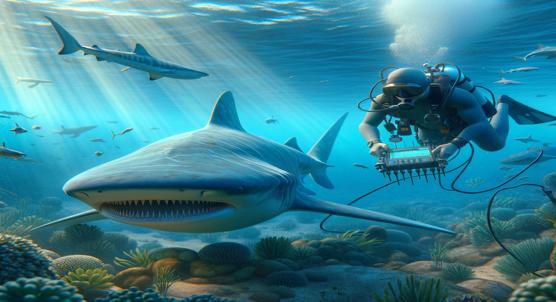
 13th July, 2024
| Jim Crocker
13th July, 2024
| Jim Crocker
Using Sound Tracking to Help Manage Basking Shark Populations
Queen's University Belfast's study using acoustic telemetry reveals detailed migratory patterns of basking sharks in Ireland and Scotland, highlighting the importance of international collaboration for effective conservation of these highly mobile marine species.
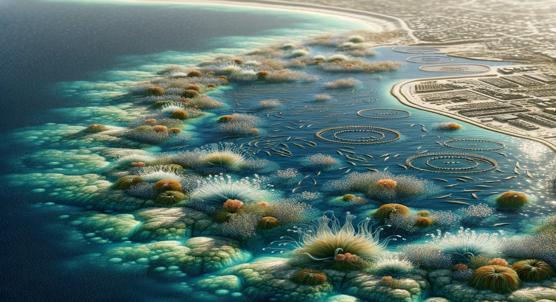
 13th July, 2024
| Jenn Hoskins
13th July, 2024
| Jenn Hoskins
Growing Coastal Marine Microalgae in Wastewater from a Salmon Farming System
A University of Agder study shows microalgae can thrive in aquaculture wastewater, effectively removing nutrients like nitrate and phosphate. This sustainable approach enhances waste management in fish farming and supports a circular bioeconomy in aquaculture.
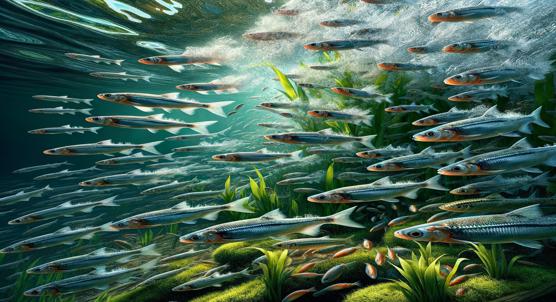
 12th July, 2024
| Jim Crocker
12th July, 2024
| Jim Crocker
How Water Clarity Affects Feeding and Survival of Young European Smelt
A study by the Thünen Institute reveals that European smelt larvae thrive at moderate turbidity levels (100-200 NTU) but suffer at high levels (300+ NTU). These findings can guide conservation efforts to manage smelt populations in turbid rivers affected by human activities.

 12th July, 2024
| Jim Crocker
12th July, 2024
| Jim Crocker
How Genome-wide Study of DNA Markers Helps Find Key Gene Control Areas in Fish
New research from the National Institute of Genetics reveals how non-coding DNA regions, known as cis-regulatory elements, drive evolution. Using advanced techniques, scientists mapped these regions to uncover how gene regulation evolves, offering fresh insights into adaptation.
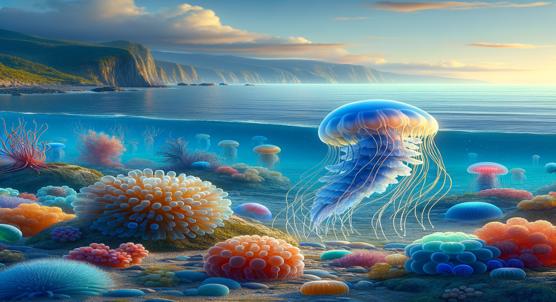
 12th July, 2024
| Jim Crocker
12th July, 2024
| Jim Crocker
New Sightings of Two Jellyfish Species in the Northwest Mediterranean Coast
Jellyfish blooms are increasingly impacting coastal economies and environments. A study by Beijing Forestry University documents new jellyfish species in the Moroccan Mediterranean, emphasizing the need for ongoing research and innovative solutions to manage these outbreaks.
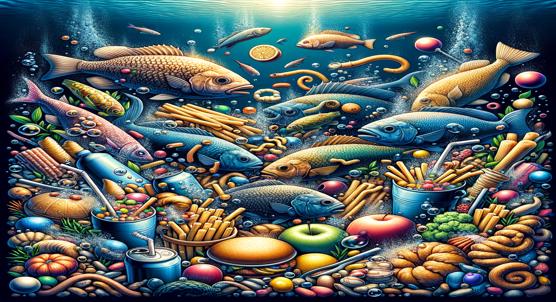
 11th July, 2024
| Jim Crocker
11th July, 2024
| Jim Crocker
Fish Choosing Their Own Alternative Diets
A study from Universidad de Murcia reveals that Nile tilapia prefer a diet with alternative ingredients, while gilthead seabream show no strong preference. This shift towards considering fish preferences may lead to more ethical and sustainable aquaculture practices.
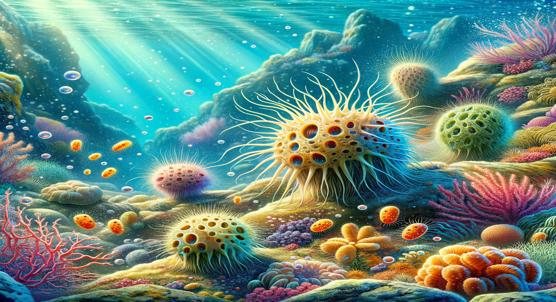
 8th July, 2024
| Jenn Hoskins
8th July, 2024
| Jenn Hoskins
How Mediterranean Sponges React to Friendly Microbes
Recent research reveals how sponges use sophisticated immune receptors to differentiate between symbiotic and non-symbiotic microbes, ensuring beneficial relationships and maintaining homeostasis. This underscores the vital role of microbes in animal development and physiology.
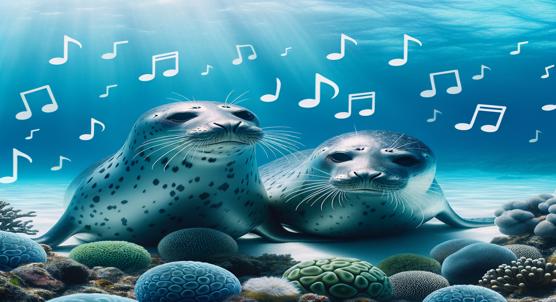
 8th July, 2024
| Jenn Hoskins
8th July, 2024
| Jenn Hoskins
First Observations of Mating Behavior and Sounds in Wild Leopard Seals
Baylor University's study unveils the first wild courtship of leopard seals in South America, highlighting distinct male and female behaviors and complex vocalizations. This research deepens our understanding of their mating rituals and the role of vocal communication.
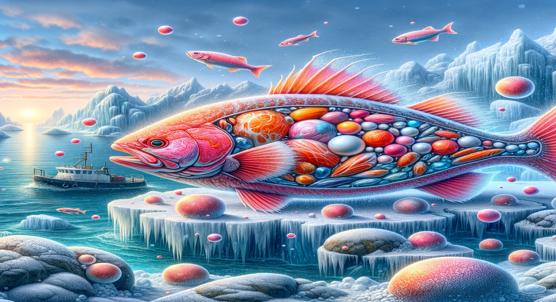
 8th July, 2024
| Greg Howard
8th July, 2024
| Greg Howard
Dietary Fats and Astaxanthin Impact the Color of Arctic Fish
Optimizing astaxanthin and dietary lipids can significantly enhance the red pigmentation of Arctic charr, boosting their market appeal and nutritional value. Memorial University’s study reveals how these dietary tweaks can improve fish quality, aligning with consumer preferences.
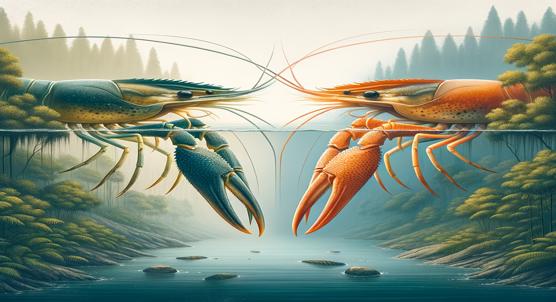
 7th July, 2024
| Jenn Hoskins
7th July, 2024
| Jenn Hoskins
Size Differences in Freshwater Prawn Claws Found in Lake and River System
Freshwater prawns, especially Macrobrachium vollenhovenii, show promise in fighting schistosomiasis and providing protein in West Africa. A study reveals genetic differences among claw types, aiding precise aquaculture practices for sustainable use and disease control.
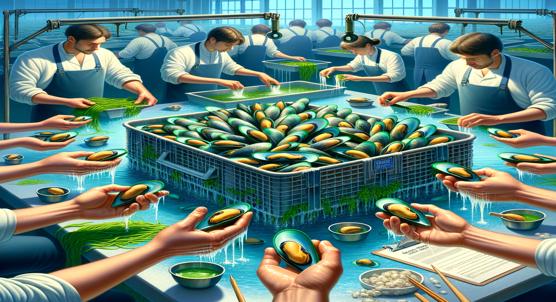
 7th July, 2024
| Jenn Hoskins
7th July, 2024
| Jenn Hoskins
Preparing Green-Lipped Mussels for Live Transport by Slowing Their Metabolism
The University of Auckland found that using magnesium chloride to relax Green-lipped mussels disrupts their metabolism, indicating stress. This calls for careful anesthetic use in research and aquaculture to ensure accurate results and animal welfare.
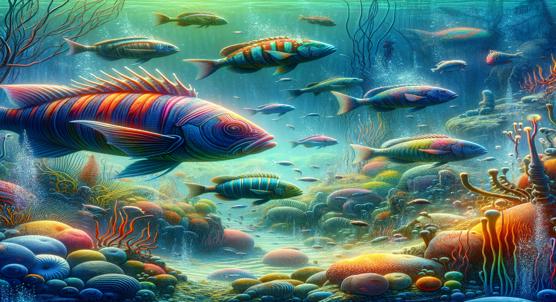
 7th July, 2024
| Jenn Hoskins
7th July, 2024
| Jenn Hoskins
Elemental Composition and Health Risk of Deep-Sea Fish in the Levantine Basin
A study by Mersin University found varying levels of metal contamination in deep-sea fish from Mersin Bay, with arsenic posing the highest health risk. Continuous monitoring is essential to ensure seafood safety.
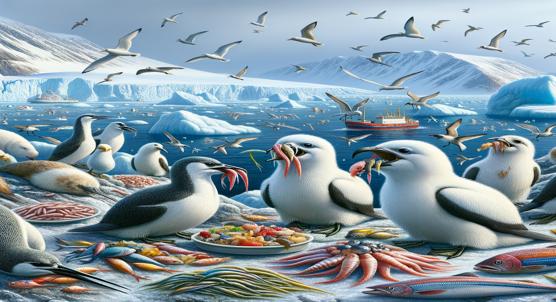
 7th July, 2024
| Jenn Hoskins
7th July, 2024
| Jenn Hoskins
DNA Analysis Shows Diverse Diets of Arctic Seabirds
Researchers from Wageningen University used DNA-metabarcoding to study Arctic seabird diets, revealing a rich diversity of prey and highlighting the method's potential for cost-effective, non-invasive monitoring of environmental changes impacting marine ecosystems.
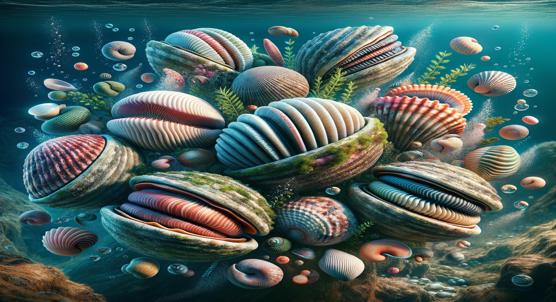
 6th July, 2024
| Greg Howard
6th July, 2024
| Greg Howard
Species Composition and Genetic Connectivity of Deep Fjord Bivalves
Thyasirid bivalves in fjord basins show distinct genetic clusters due to limited gene flow and local adaptation. This study reveals how fjord's unique habitats shape benthic species' ecology, offering insights for conservation and environmental monitoring.
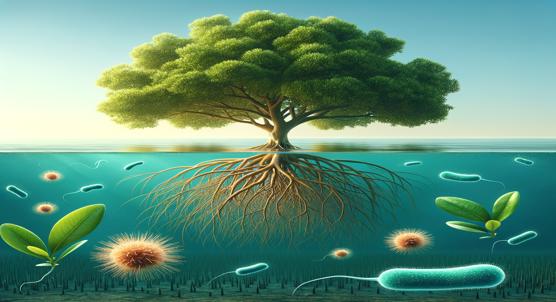
 6th July, 2024
| Jenn Hoskins
6th July, 2024
| Jenn Hoskins
Unlocking Plant Growth Secrets: Study of a Helpful Bacterium from Mangrove Trees
A study by King Abdullah University reveals that the halophilic bacterium Tritonibacter mobilis AK171 can boost plant growth in salty conditions, offering a sustainable solution to freshwater scarcity in agriculture through microbial symbiosis and stress tolerance.
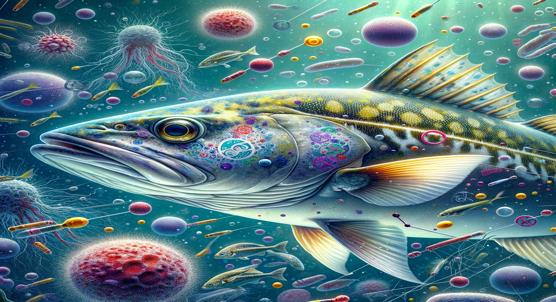
 4th July, 2024
| Greg Howard
4th July, 2024
| Greg Howard
Comprehensive Study of Immune Genes and Antibody Diversity in Atlantic Cod
Researchers at the University of Oslo have uncovered how the Atlantic cod mounts an effective immune response despite lacking a key pathway found in most vertebrates. This study highlights the adaptability of immune systems and could inform new disease management strategies.
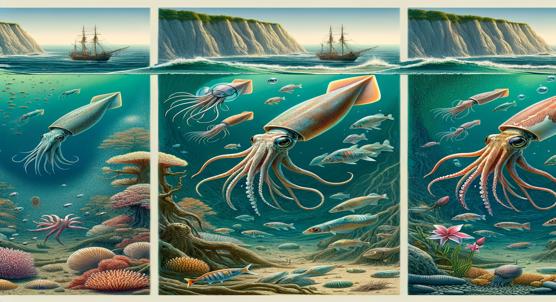
 4th July, 2024
| Greg Howard
4th July, 2024
| Greg Howard
Understanding Ecosystem Changes Over Time Using Historical Squid Beaks
A study by GEOMAR reveals how climate change impacts Arctic marine ecosystems by analyzing stable isotopes in squid bodies from 1844-2023. These short-living mesopredators show rapid adaptation to environmental shifts, offering fresh insights into ecosystem changes.
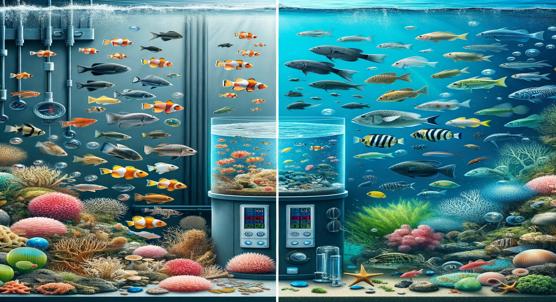
 4th July, 2024
| Jim Crocker
4th July, 2024
| Jim Crocker
How Captivity and Natural Habitats Affect Gut Health in Fish Throughout the Year
Recent research from Xiamen University reveals that wild red-spotted groupers have a more diverse and stable gut microbiota than captive ones, influenced by natural diets and seasonal changes. This insight could optimize aquaculture practices for healthier, more productive fish.
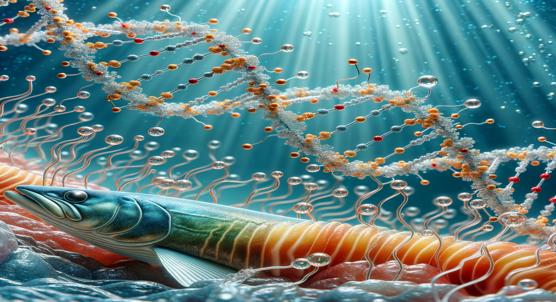
 4th July, 2024
| Jenn Hoskins
4th July, 2024
| Jenn Hoskins
Genomic Study of Piscicolin CM22 from Bacteria Found in Salmon
Antibiotic resistance is rising, but a new lactic acid bacteria strain from salmon gut, producing bacteriocin piscicolin CM22, shows promise. Effective against key Gram-positive pathogens, it offers potential for food safety and reducing reliance on traditional antibiotics.

 3rd July, 2024
| Jenn Hoskins
3rd July, 2024
| Jenn Hoskins
Boosting Seaweed Growth with a Two-Kelp Strategy
Interest in kelp farming is shifting towards bioplastics, requiring large biomass yields. A study showed that growing two kelp species together can optimize space and boost production, offering a promising approach for sustainable large-scale kelp farming.
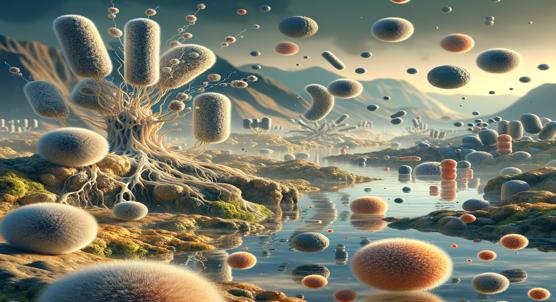
 3rd July, 2024
| Jim Crocker
3rd July, 2024
| Jim Crocker
How Oxygen-Using Bacteria Survive Low Oxygen in Methane-Producing Lake Sediments
Researchers from Ben-Gurion University discovered that aerobic methanotrophs can adapt to low-oxygen conditions in Lake Kinneret. This adaptability, driven by specific genes, broadens our understanding of methane oxidation and its role in controlling greenhouse gas emissions.
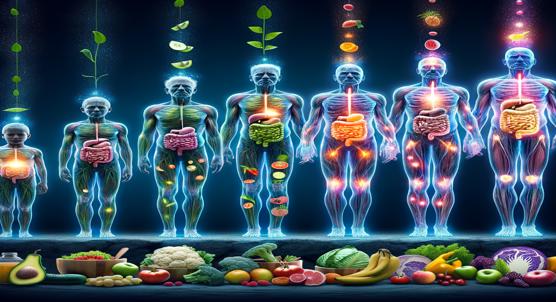
 2nd July, 2024
| Jim Crocker
2nd July, 2024
| Jim Crocker
How a Plant-Rich Diet Affects Gut Health and Metabolism at Different Life Stages
The University of Aberdeen's study reveals that early exposure to plant-based diets in Atlantic salmon can sustain growth and modulate gut microbiota, supporting the shift towards sustainable aquaculture by reducing reliance on marine ingredients.
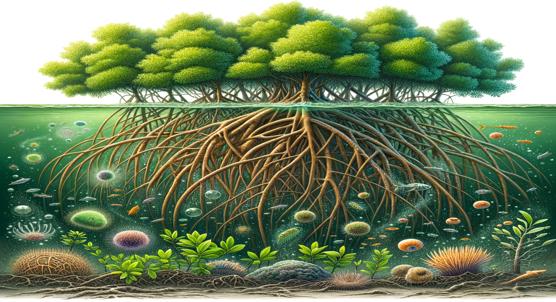
 29th June, 2024
| Jim Crocker
29th June, 2024
| Jim Crocker
Life in Mangroves: A Cooperative Microbiome Revealing Hidden Resources
Mangroves are vital for carbon sequestration and nutrient cycling. A new study reveals how microbial communities in these ecosystems interact metabolically, highlighting their roles in carbon, nitrogen, and sulfur cycles. These insights could enhance bioremediation strategies.
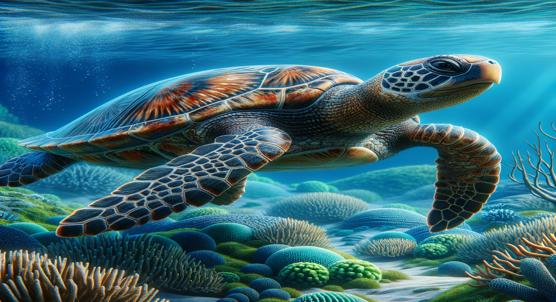
 27th June, 2024
| Jenn Hoskins
27th June, 2024
| Jenn Hoskins
Understanding Marine Turtle Tumors and Viruses: A Comprehensive Health Review
A study by Universidad Autónoma de Baja California Sur reveals a rise in fibropapillomatosis (FP) and its associated virus in marine turtles in North-western Mexico over the past decade, linking the increase to environmental stressors like pollution and climate change.
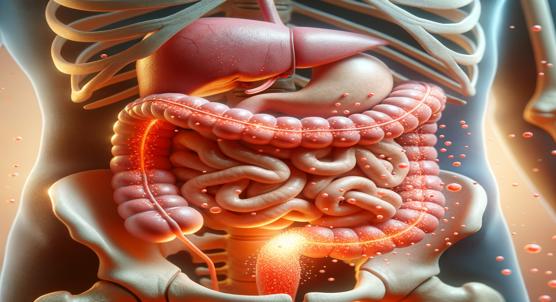
 26th June, 2024
| Greg Howard
26th June, 2024
| Greg Howard
How Bile Salts Affect Intestinal Health
A study on gilthead sea bream shows that bile salts aid nutrient absorption but high concentrations may harm intestinal health. Findings highlight the need for balanced bile salt use in fish diets to optimize aquaculture practices.
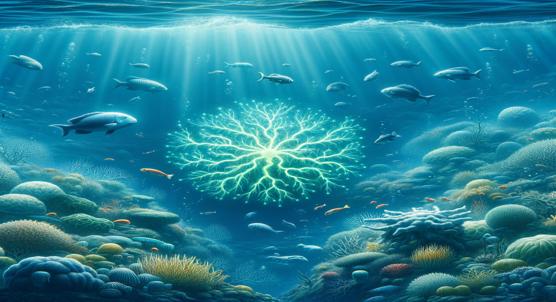
 26th June, 2024
| Jenn Hoskins
26th June, 2024
| Jenn Hoskins
How Ocean Acidification Affects the Nervous System and Behavior of Marine Life
James Cook University research reveals how marine invertebrates' nervous systems respond to ocean acidification, highlighting the role of GABA receptors in behavioral changes. These insights are crucial for predicting ecological impacts and informing conservation strategies.
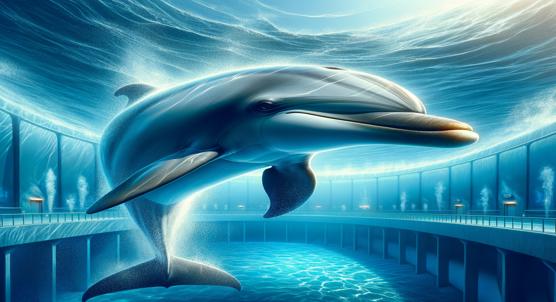
 22nd June, 2024
| Jenn Hoskins
22nd June, 2024
| Jenn Hoskins
How Activity Levels Affect Body Temperature in Captive Dolphins
Researchers at The University of Tokyo found that cetaceans, like the Risso’s dolphin, regulate body heat through a combination of muscle metabolism and blubber insulation. Increased activity raises muscle temperature, aiding thermoregulation, while blubber minimizes heat loss.
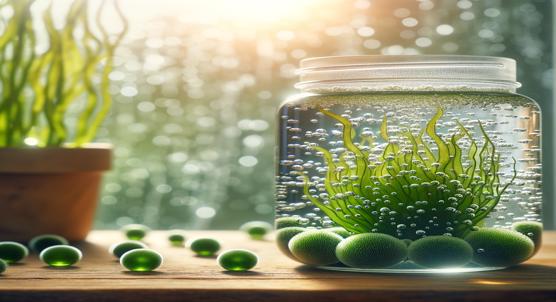
 21st June, 2024
| Jim Crocker
21st June, 2024
| Jim Crocker
Boosting Algae Growth and Healthy Fats Using Filtered Whey
University College Dublin researchers found that nano-filtered whey permeate, a dairy by-product, can sustainably grow the microalga Nannochloropsis oceanica. This method efficiently produces valuable omega-3 fatty acids, while also addressing waste management issues.
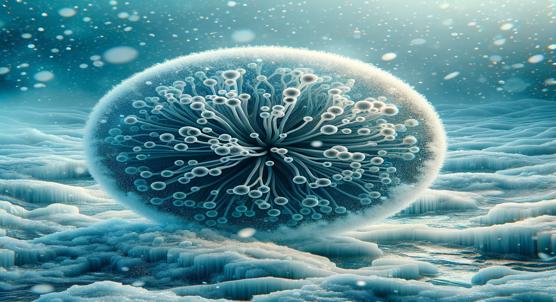
 18th June, 2024
| Greg Howard
18th June, 2024
| Greg Howard
Discovering the Hidden Potential of an Arctic Marine Fungus for Medicine
Recent research by Zhejiang University reveals the biosynthetic potential of Arctic marine fungus Aspergillus sydowii MNP-2, uncovering novel bioactive compounds. This study underscores polar regions' microbial diversity and their promise in developing new therapeutic agents.
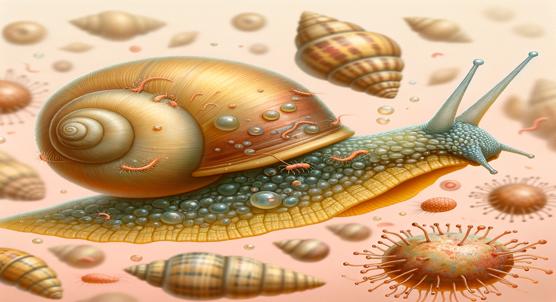
 18th June, 2024
| Jim Crocker
18th June, 2024
| Jim Crocker
How Different Parasites Affect Snail Genes and Lead to Reproductive Issues
Researchers at the University of New Mexico have used advanced genomics to study how Biomphalaria snails, vectors for schistosomiasis, respond to parasitic infections. This insight into their immune and reproductive systems may lead to innovative disease control strategies.
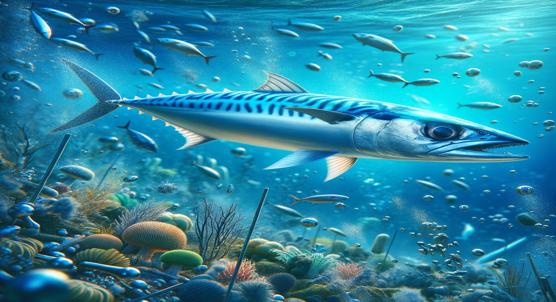
 15th June, 2024
| Greg Howard
15th June, 2024
| Greg Howard
Environmental Factors Affecting Metal Levels in Atlantic Mackerel
A study by the University of La Laguna found varying heavy metal levels in mackerel around the Canary Islands, linked to human activity and natural phenomena. This highlights the need for targeted pollution control and monitoring to protect ecosystems and food safety.
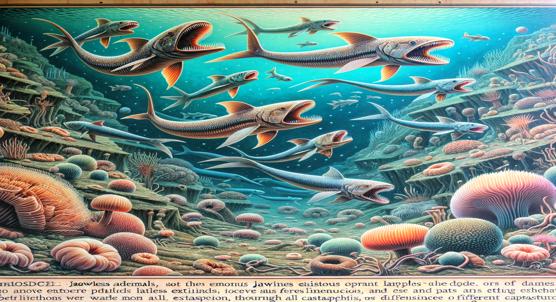
 14th June, 2024
| Jenn Hoskins
14th June, 2024
| Jenn Hoskins
Ocean Floor Colonization by Jawless Animals Through Three Mass Extinctions
Yale researchers reveal that hagfishes, ancient jawless vertebrates, share deep evolutionary ties with other marine vertebrates, affirming that the deep ocean floor acts as a biodiversity refuge. Key genetic adaptations help hagfishes thrive in these unique environments.
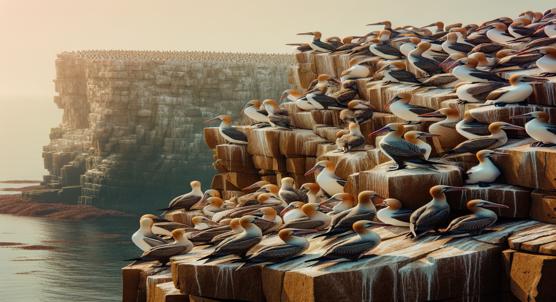
 14th June, 2024
| Jenn Hoskins
14th June, 2024
| Jenn Hoskins
Seabirds Stick to Favorite Spots but Adapt When They Find New Information
Researchers at Bush Estate reveal how animals' loyalty to specific foraging spots can be both beneficial and costly. Their study shows that while some species stick to familiar areas, others adapt based on environmental changes, impacting survival and conservation strategies.
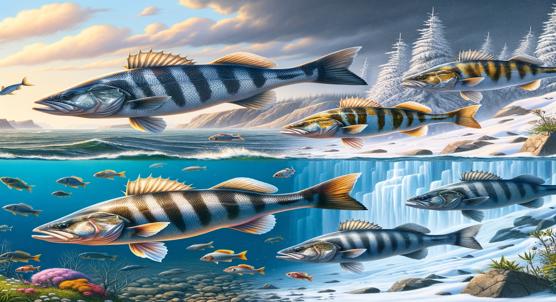
 12th June, 2024
| Jim Crocker
12th June, 2024
| Jim Crocker
Seasonal Movements of European Sea Bass in Local Waters
A Cefas study tagged and tracked 171 mature sea bass in UK waters, revealing their seasonal migrations and habitat use. The findings show distinct movement patterns and suggest extensive regional connectivity, aiding in the sustainable management of sea bass stocks.
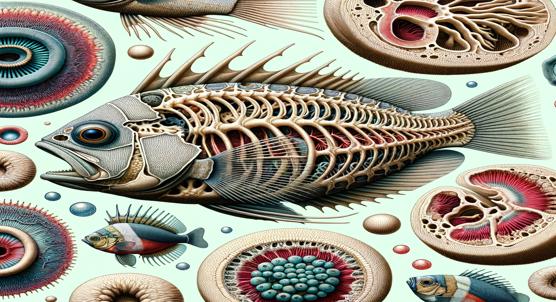
 12th June, 2024
| Jim Crocker
12th June, 2024
| Jim Crocker
Salinity Effects on Protein Modifications in Fish Gills and Reproductive Organs
Environmental stress alters histone proteins in Mozambique tilapia, affecting gene expression in gills, kidneys, and testes. This study shows how specific histone modifications help organisms adapt to changing salinity, highlighting epigenetic roles in survival and evolution.
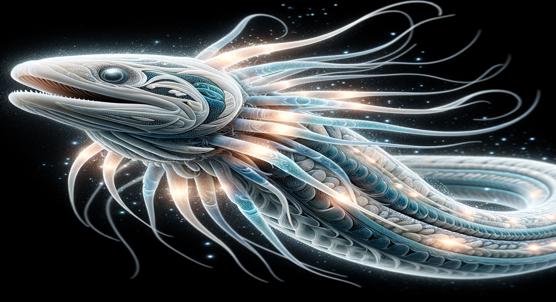
 12th June, 2024
| Jim Crocker
12th June, 2024
| Jim Crocker
Gene Activity Study of Japanese Eel During Larval Metamorphosis
Recent advancements in rearing techniques have allowed researchers to study the metamorphosis of Japanese eels. They discovered that thyroid hormones drive significant genetic changes, revealing the roles of retinoic acid signaling and phototransduction in this complex process.
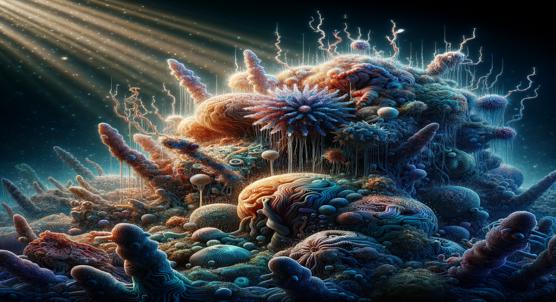
 11th June, 2024
| Jim Crocker
11th June, 2024
| Jim Crocker
How Deep Ocean Conditions Shape Coral Microbiomes
A study by Lehigh University reveals significant variability in the microbiomes of deep-sea corals, influenced by environmental factors and coral genotypes. Understanding these microbial communities is crucial for coral health and conservation.
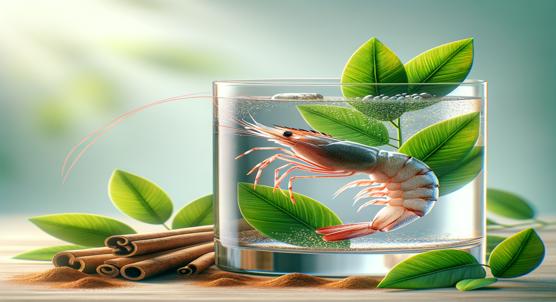
 8th June, 2024
| Jenn Hoskins
8th June, 2024
| Jenn Hoskins
Boosting Immune Responses and Health in Shrimp with Cinnamon Leaf Extract
Researchers found that Cinnamomum osmophloeum leaf extract boosts the immune response and disease resistance in white shrimp. Feeding shrimp with this extract enhances their ability to fight off pathogens, offering a natural alternative to traditional treatments in aquaculture.
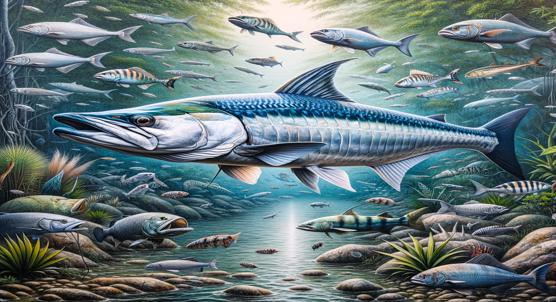
 8th June, 2024
| Greg Howard
8th June, 2024
| Greg Howard
Ecological Dynamics and Conservation of Indo-Pacific Tarpon in Lake Siombak
A study on Indo-Pacific Tarpon in Lake Siombak, Indonesia, reveals a male-dominated population with immature females, moderate growth, and omnivorous diet. Overexploitation threatens sustainability, urging immediate regulatory action to safeguard this vital aquatic ecosystem.
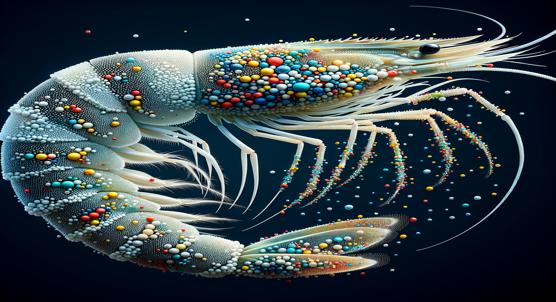
 6th June, 2024
| Greg Howard
6th June, 2024
| Greg Howard
High-Density Genetic Map and Sex-Determination Genes in Pacific White Shrimp
A study by São Paulo State University has created detailed genetic maps for Pacific white shrimp, identifying regions linked to sex determination. This breakthrough aids selective breeding, promising improved growth, disease resistance, and efficient shrimp farming.
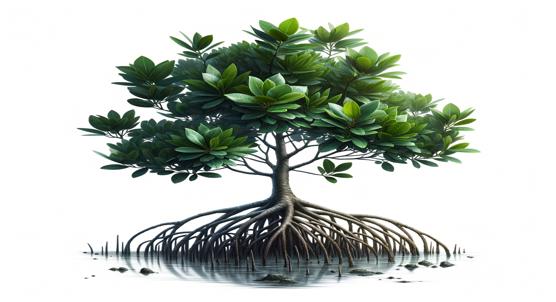
 6th June, 2024
| Jim Crocker
6th June, 2024
| Jim Crocker
Understanding Salt-Related Genes in the Leaves of Mangrove Trees
Recent research reveals that specific long non-coding RNAs (lncRNAs) in Avicennia marina leaves help the mangrove thrive in salty environments. These lncRNAs regulate metabolic and physiological processes, enhancing the plant's salt stress response and resilience.
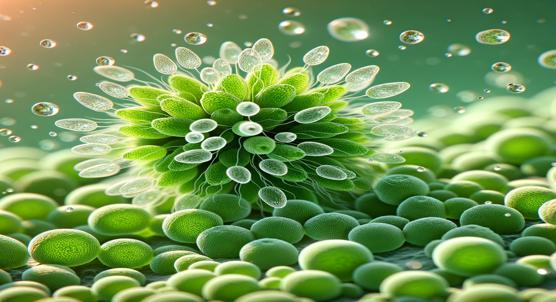
 6th June, 2024
| Greg Howard
6th June, 2024
| Greg Howard
New Insights into How Tiny Algae Make Their Silica Shells
The draft genome of Nitzschia closterium f. minutissima reveals its evolutionary traits and molecular processes in silica cell wall formation. This research enhances understanding of diatom biology and their potential applications in nanotechnology and biomedicine.
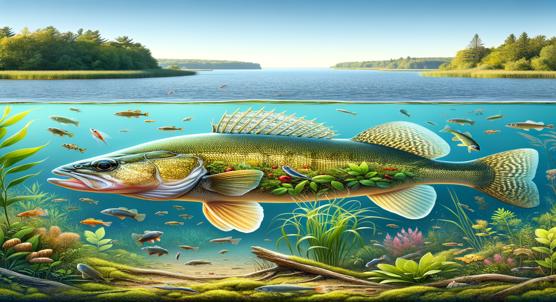
 6th June, 2024
| Jenn Hoskins
6th June, 2024
| Jenn Hoskins
Why Lake-Wetland Areas Are Crucial for a Strong Walleye Fish Population
Wetlands play a crucial role in supporting diverse prey communities, benefiting predator species like Walleye. This study highlights the importance of wetland reconnection for maintaining healthy fisheries and enhancing ecological resilience.
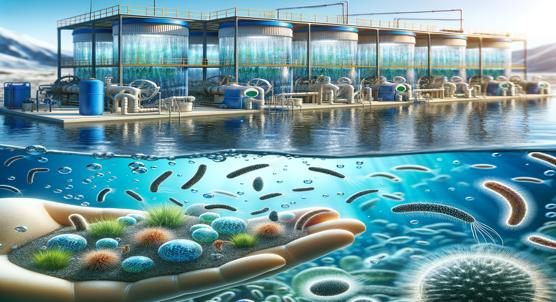
 4th June, 2024
| Greg Howard
4th June, 2024
| Greg Howard
Improving Water Quality and Microbial Health in Integrated Aquaculture Ponds
Researchers at Shanghai Ocean University found that integrated multi-trophic aquaculture ponds effectively reduce nitrogen pollution through denitrification and anammox processes. These ponds, containing various marine species, show promise for sustainable aquaculture practices.

 2nd June, 2024
| Jenn Hoskins
2nd June, 2024
| Jenn Hoskins
Creating Edible Films from Fish Gelatin and Garlic Oil
Researchers at FURG have enhanced fish gelatin films for sustainable packaging by adding garlic essential oil, which improves barrier properties and reduces water vapor permeability, leveraging garlic's antibacterial benefits and efficient extraction methods.
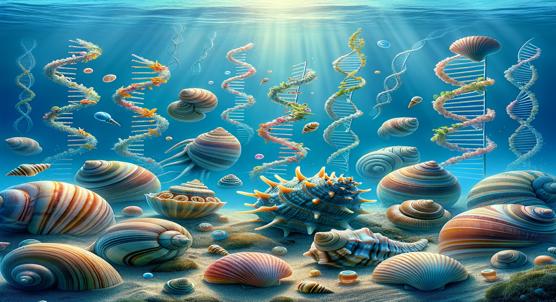
 1st June, 2024
| Jenn Hoskins
1st June, 2024
| Jenn Hoskins
Creating and Comparing DNA Tools for Identifying Marine Shellfish
Researchers from Shanghai Jiao Tong University developed new primers for eDNA analysis, enhancing the monitoring of marine mollusk biodiversity. The primer MollCOI253 showed superior performance, offering a non-invasive, comprehensive method for marine ecosystem conservation.
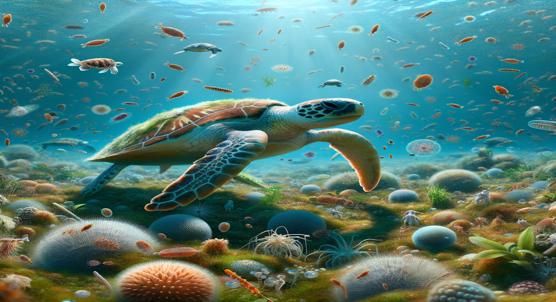
 31st May, 2024
| Greg Howard
31st May, 2024
| Greg Howard
Loggerhead Sea Turtles Harbor Diverse Bacteria and Fungi
Research on loggerhead sea turtles reveals that bacterial diversity in their gut decreases with age. The study identifies distinct bacterial and fungal communities in different body sites, offering insights to enhance conservation and rehabilitation efforts.
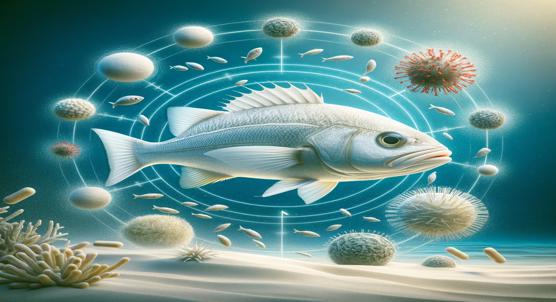
 30th May, 2024
| Greg Howard
30th May, 2024
| Greg Howard
Understanding How a Key Immune Protein Works in White Croaker Fish
Zhejiang Ocean University's study on IL-10 in Nibea albiflora reveals its crucial role in regulating inflammation and immune response in fish. The findings highlight IL-10's evolutionary conservation and potential implications for aquaculture and fish health management.
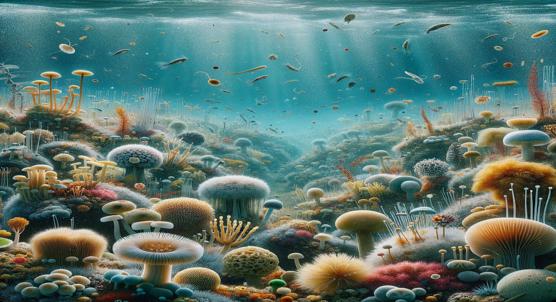
 29th May, 2024
| Jenn Hoskins
29th May, 2024
| Jenn Hoskins
Exploring Marine Fungal Diversity and Changes in the Northern Adriatic Sea
A study by OGS reveals the diverse and dynamic fungal communities in the Gulf of Trieste, highlighting the role of organic carbon to nitrogen ratios in shaping these communities. This research underscores fungi's crucial role in marine ecosystems and nutrient cycling.

 28th May, 2024
| Greg Howard
28th May, 2024
| Greg Howard
Delaying Sexual Maturation in Females Using Exemestane and Tamoxifen
Researchers at Jeju National University discovered that exemestane induces intersex conditions in olive flounder, while tamoxifen does not. This study reveals how estrogen-related compounds affect sex differentiation, offering insights for aquaculture and conservation efforts.
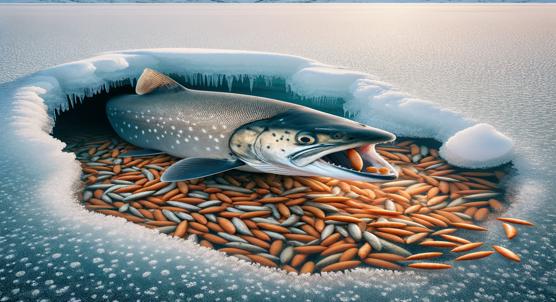
 27th May, 2024
| Jim Crocker
27th May, 2024
| Jim Crocker
Surprising but Crucial Food Source for Arctic Charr in a Remote Lake
The discovery of Mysis segerstralei in Lake Pulmankijärvi and its role in the diet of Arctic charr in Lake Vårfluesjøen reveals the species' adaptability and importance in Arctic lake ecosystems. This study highlights complex interactions and energy flow in these environments.

 26th May, 2024
| Jim Crocker
26th May, 2024
| Jim Crocker
How Astragalus Plant Extracts Help Manage High-Fat Diet-Induced Lipid Issues
Astragalus membranaceus polysaccharides (AMP) show promise in mitigating lipid metabolism disorders in spotted sea bass fed high-fat diets, reducing oxidative stress, liver damage, and harmful cholesterol levels, thus enhancing fish health and aquaculture sustainability.
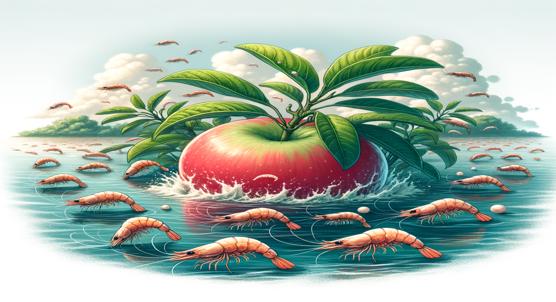
 25th May, 2024
| Jenn Hoskins
25th May, 2024
| Jenn Hoskins
Effectiveness of Pond Apple Extract on Shrimp Disease Prevention
Methanol extracts from pond apple leaves show promise in combating shrimp disease AHPND, boosting immune response, growth, and survival rates. This natural alternative to antibiotics offers a sustainable solution for shrimp aquaculture.
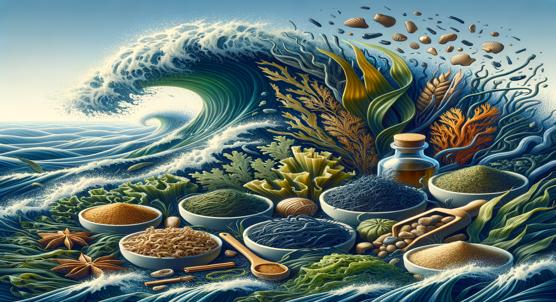
 23rd May, 2024
| Jenn Hoskins
23rd May, 2024
| Jenn Hoskins
Nutritional and Sensory Benefits of Seaweed Based on Different Drying Methods
A study by the Technical University of Denmark reveals how different drying methods impact the nutritional and sensory qualities of seaweed. Findings show that drying methods should be tailored to each seaweed species to preserve their unique benefits and properties.
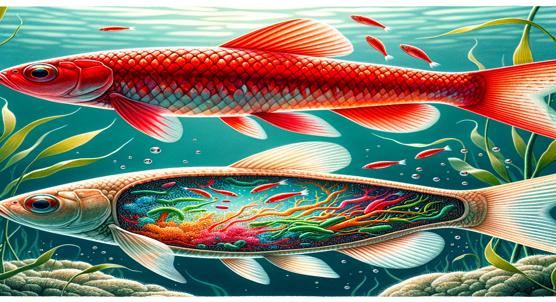
 23rd May, 2024
| Jenn Hoskins
23rd May, 2024
| Jenn Hoskins
Gut Microbial Composition of Wild Red and Sand Shiners
Recent research uncovers the unique gut microbiomes of red and sand shiners, revealing distinct bacterial communities influenced by both host species and environmental factors. This study expands our understanding of fish health and physiology.
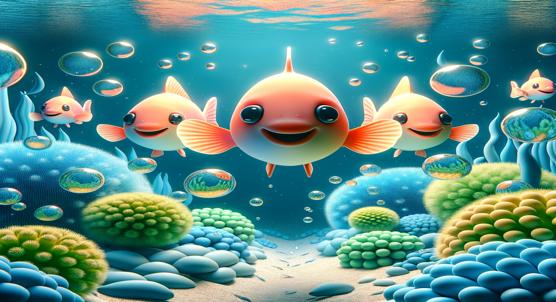
 22nd May, 2024
| Jenn Hoskins
22nd May, 2024
| Jenn Hoskins
Probiotic Benefits: How Technospore® Boosts Health and Immunity in Farmed Fish
A study by Kafrelsheikh University reveals that Technospore® (Bacillus coagulans) enhances gut health, immune response, and growth in Nile tilapia, offering a promising antibiotic alternative for sustainable aquaculture.
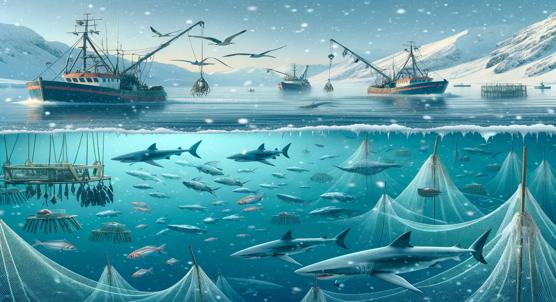
 19th May, 2024
| Jim Crocker
19th May, 2024
| Jim Crocker
Marine Predator Movements in Winter and Their Impact on Fisheries Management
The British Antarctic Survey's winter surveys of South Georgia reveal how krill availability impacts marine predators like fur seals and penguins. The study underscores the need for continuous monitoring to balance krill fishing with marine conservation.
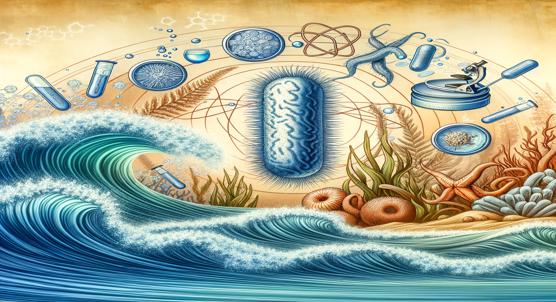
 16th May, 2024
| Jim Crocker
16th May, 2024
| Jim Crocker
Probiotic Benefits and Safety of Marine Bacteria E3: A Complete Genome Study
A study on marine-derived Pediococcus pentosaceus E3 reveals its probiotic potential. It survives harsh gut conditions, lacks harmful genes, and shows strong antibacterial activity, making it a promising health-promoting probiotic and natural biopreservative.
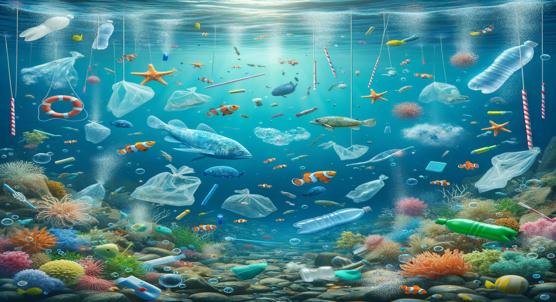
 16th May, 2024
| Jim Crocker
16th May, 2024
| Jim Crocker
Why Ocean Microbes Aren't Breaking Down Plastic Despite Pollution
A University of Auckland study reveals that marine microbes have limited capacity to degrade diverse plastics, highlighting the need for comprehensive strategies beyond natural processes to tackle plastic pollution and protect marine ecosystems.
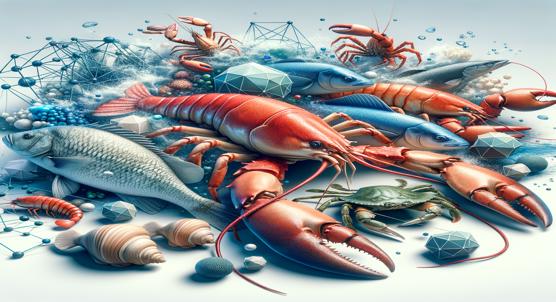
 16th May, 2024
| Jim Crocker
16th May, 2024
| Jim Crocker
Understanding Fisheries Data with Advanced Distribution Models
Species distribution models (SDMs) can untangle aggregated catch data, revealing hidden trends in fisheries. A study on shovel-nosed lobsters shows SDMs improve stock assessments and highlight shifts in fishing behavior, aiding more effective ecosystem-based management.
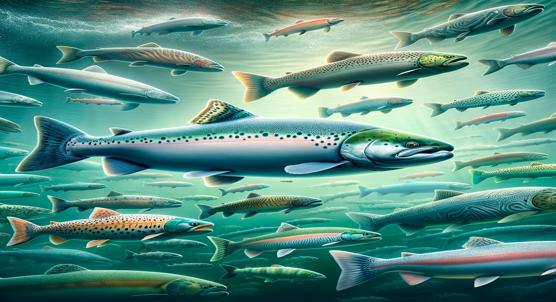
 16th May, 2024
| Jenn Hoskins
16th May, 2024
| Jenn Hoskins
Improving Genetic Predictions Using Multiple Salmon Populations
Nofima's study shows that combining multiple Atlantic salmon populations and using advanced genomic prediction models can significantly improve the accuracy of breeding values for disease resistance, particularly against amoebic gill disease, enhancing aquaculture efficiency.
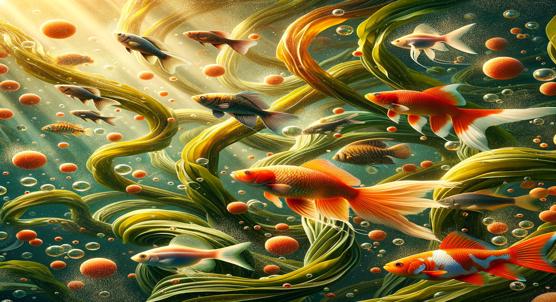
 14th May, 2024
| Jim Crocker
14th May, 2024
| Jim Crocker
Seaweed Diet Boosts Growth, Immunity, and Disease Resistance in Fish
Caulerpa racemosa seaweed boosts growth, nutrient levels, and immune responses in Cirrhinus mrigala fish. A study found it enhances resistance to the harmful Pseudomonas aeruginosa bacteria, suggesting its potential as a valuable dietary supplement in aquaculture.
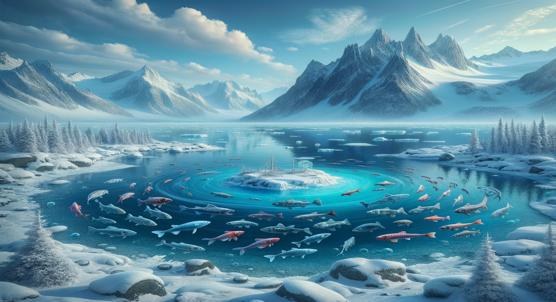
 13th May, 2024
| Jenn Hoskins
13th May, 2024
| Jenn Hoskins
Arctic Lagoons Host Unique Fish Communities Shaped by Environment
Arctic fish communities are shifting due to melting sea ice and changing winds, impacting local ecosystems and Indigenous subsistence.
